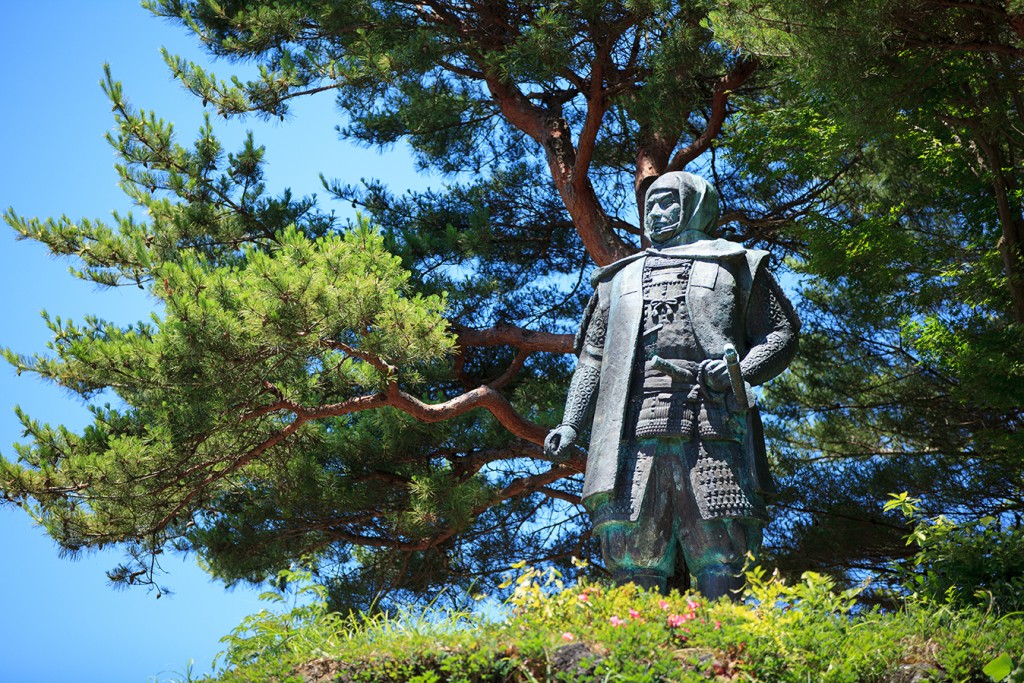Hometown of Uesugi Kenshin theme_01

Uesugi Kenshin was born in Kyoroku 3-nen (1530) as a youngest child of Tamekage Nagao, Shugodai (deputy military governor) in Echigo. Another name he used in his childhood was Torachiyo.
In Tenmon 5-nen (1536) Tamekage Nagao died, and his elder brother continued the position of his father. At the same time, Torachiyo entered the Rinsenji Temple as a pupil and studied at there from the age of 7 to 14 years old.
It is said that his deep scholarship and religiosity, rare in a Sengoku warlord, were nurtured in this period.
After that, he went through a "genpuku", a coming-of-age celebration, in Tenmon 12-nen (1543), and he was given the new name, Nagao Kagetora. He became a Shugodai in place of his invalid brother.It is said that Kenshin's profound knowledge and deep Buddhist heart, which were rare among Sengoku warlords, were cultivated during this period.After that, he celebrated his New Year's Eve and took the name ``Kagetora Nagao'', succeeded his sickly older brother as head of the family, and became the shugodai of Echigo.
The military history of Kenshin began from his Genpuku (coming-of-age celebration) in Tenmon 12-nen (1543). Since then, he fought battles often with the great commanders of the era such as Takeda Harunobu (Takeda Shingen), Hojo Ujiyasu and Oda Nobunaga. However, these battles were not battles because of desire for glory, but rather out of a sense of duty and righteousness. The battle of Kawanakajima is especially famous. He fought over 5 times with Takeda Harunobu in Kawanakajima in support of Murakami Yoshikiyo and Takanashi Masayori, who had their territory robbed by Takeda Harunobu.
There is also the famous episode when Takeda Harunobu, who had been Kenshin's enemy, had his supply of salt cut off by Imagawa Ujizane. Kenshin criticised the action and sent supplies of salt to Takeda Harunobu's territory.
Raisanyo, a confucian scholar during the Edo period, praised this act, and it’s said that the historical phrase “sending salt to the enemy” was born from this incident.
The character of Kenshin's flag 「毘」, comes from “Bishamonten” a Buddhist diety. Kenshin believed deeply that he was the reincarnated God Bishamonten.
The flag of 「龍」raised during an all-out attack was called “the Disturbed Dragon," and later, "Echigo’s Dragon.”
He excelled in a fighting, but he was also an expert in Japanese poetry and calligraphy. He demonstrated his ability internal affairs and diplomacy.
He recommended the cultivation of Aoso (blue ramie), which could be used to make clothes. It spread among the all of Japan through the Sea of Japan and became a good source of funds.
He closed the curtain on his life after 49 years with his death in Tensho 6-nen (1578), and it was a life of continuous fighting and war.
In that he went through life single and never took a wife, it can be said he was a unique samurai warrior in the Age of Warring States.
Joetsu City, the hometown of Uesugi Kenshin, has many historical sites, temples, and shrines related to him. Please visit not only Kasugayama Castle but also the other places related to Kenshin dotted around the city.